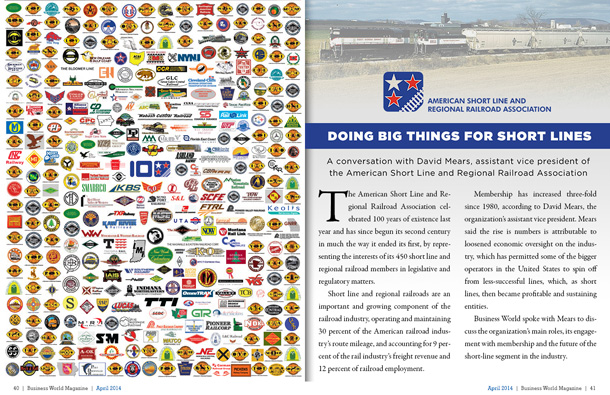

Green, innovative and open to the world
With ongoing economic storm clouds swirling through most of the world, it’s a good time to take stock of the forest sector, one of Canada’s oldest and most important industries ― about where it is and where it wants to go.
It has been a sobering few years. About 100,000 jobs were lost over the past decade, which is about a third of the industry’s workforce. Companies bled red ink and, since 2007, almost 300 mills have closed in Canada. Last year the industry returned to profitability. However, looking forward, there is no doubt that the outlook remains uncertain. Countries are teetering on the brink or have already tumbled back into recession. Emerging markets such as China, India and Brazil are slowing down. There is global angst about the crisis in sovereign debt. The American housing market has stubbornly resisted a rebound. The trend to digital communication continues to shrink the demand for paper.
However, the Conference Board of Canada predicts that lumber producers will double their profit this year and create about 6,000 jobs, and that pulp and paper will also post modest profits. Export Development Canada also expects a 13 per cent growth rate for forest product exports in 2012. And I can tell you that the member companies of the Forest Products Association of Canada (FPAC) are looking to the future with confidence. FPAC is the voice of Canada’s wood, pulp and paper producers nationally and internationally in government, trade and environmental affairs.
Why the bullish sentiment? Well, the forest industry in Canada has been doing much to reinvent itself to ensure its survival and prosperity in these unsettled times. Instead of simply waiting for better economic conditions, the sector has been retooling and reinventing itself to become a dynamic player in the global marketplace of the 21st century. Companies have reduced costs, taken out excess capacity, and enhanced productivity. In fact, the Canadian forest sector has consistently outperformed the general economy in terms of labour, capital, and productivity growth, and its productivity ranks higher than its U.S. counterpart.
Instead of sitting back and waiting for the return of the U.S. housing market, the industry has been boldly cultivating new markets, especially in Asia. As recently as 2006, a full 86 per cent of Canadian wood exports went to the United States. That number has now fallen to 63 per cent. At the same time, the sector has seen its exports to China explode. Since the year 2000 the industry has increased its lumber exports to China by 46 times in terms of value. Forest products are now Canada’s number one export to both China and India and British Columbia exports more forest products to Asia than it does to the United States.
Canadian forest companies have also developed world leading environmental credentials. For example, the industry welcomes independent scrutiny. Canada, by far, has more forest land independently certified as well as managed than any other country in the world. In fact, third-party certification of the forest practices of FPAC companies is a condition of membership – a world first.
The industry has made extraordinary progress in many other areas. Since 1990, it has reduced its absolute greenhouse gas emission by 66 per cent. It has eliminated dioxins and furans in water and reduced water consumption by more than a third since 1990. There has been a 73 per cent reduction in particulate emissions as well as an 86 per cent decrease in odour emissions since 1992.
More than two-thirds of the energy consumption of FPAC members’ pulp and paper operations now come from renewable sources such as biomass and small hydro projects. The Canadian forest industry produces enough renewable electricity generation capacity to power Edmonton and Calgary combined, or to power the entire needs of the Maritime Provinces.
One of the biggest successes for FPAC in the past decade has been the signing of the landmark Canadian Boreal Forest Agreement (CBFA), which brought together FPAC members companies and major environmental groups, and is considered the largest conservation agreement ever reached. The agreement is aimed at preserving significant areas of Canada’s vast Boreal forest and protecting threatened species such as woodland caribou while also preserving forest jobs and providing a competitive market edge for participating companies.
The sector is also poised to become a major player in the new bio-economy. FPAC led the world’s first Biopathways study to analyse the viability of extracting more value from every tree. The study showed the economic, environmental and social benefits of integrating the production of new innovative products such as bio-fuels, bio-chemicals and bio-materials into traditional lumber, pulp and paper mills. It also identified a huge market for such products including everything from airplane parts, to clothing, to food additives. Canada is now a world leader in research into the likes of nano-crystalline cellulose and bioactive paper.
Governments have played an important role in this transformation. Fortunately, the days when governments’ response to a crisis was to simply subsidize the status quo are mostly over. Instead they have been supporting the sector’s transformation into an industry that is more productive, greener and more diversified in its products and markets. And this has helped make the industry more competitive as well.
We at FPAC continue to work hard to convince government to remain a vital partner and offer ongoing strategic support for the re-invention of Canada’s forest products industry. For example, we are looking for support to help implement the ambitious goals of the CBFA. However even though the government has been helping with market development and such initiatives as the Investment in Forest Industry Transformation or IFIT program, our competitors in other countries have been getting more generous backing from their governments.
Increasing competitiveness, expanding markets, leveraging the industry’s green credentials and extracting more value from every tree in the form of new innovative products are the pathways to progress for the Canadian forest industry. It is now a $57 billion a year sector that represents 12 per cent of Canada’s manufacturing GDP, directly employs 240,000 Canadians and supports 200 forest-dependent rural communities. When you add indirect jobs, 600,000 Canadians depend on the forest industry for their livelihood and a vibrant forest industry is the only way we can sustain those jobs.
In 2012 and beyond, FPAC intends to build on the momentum of transformation, support companies that are doing the hard work of retooling themselves for tomorrow’s jobs, and work with government to ensure the viability of Canada’s revitalized forest industry.







